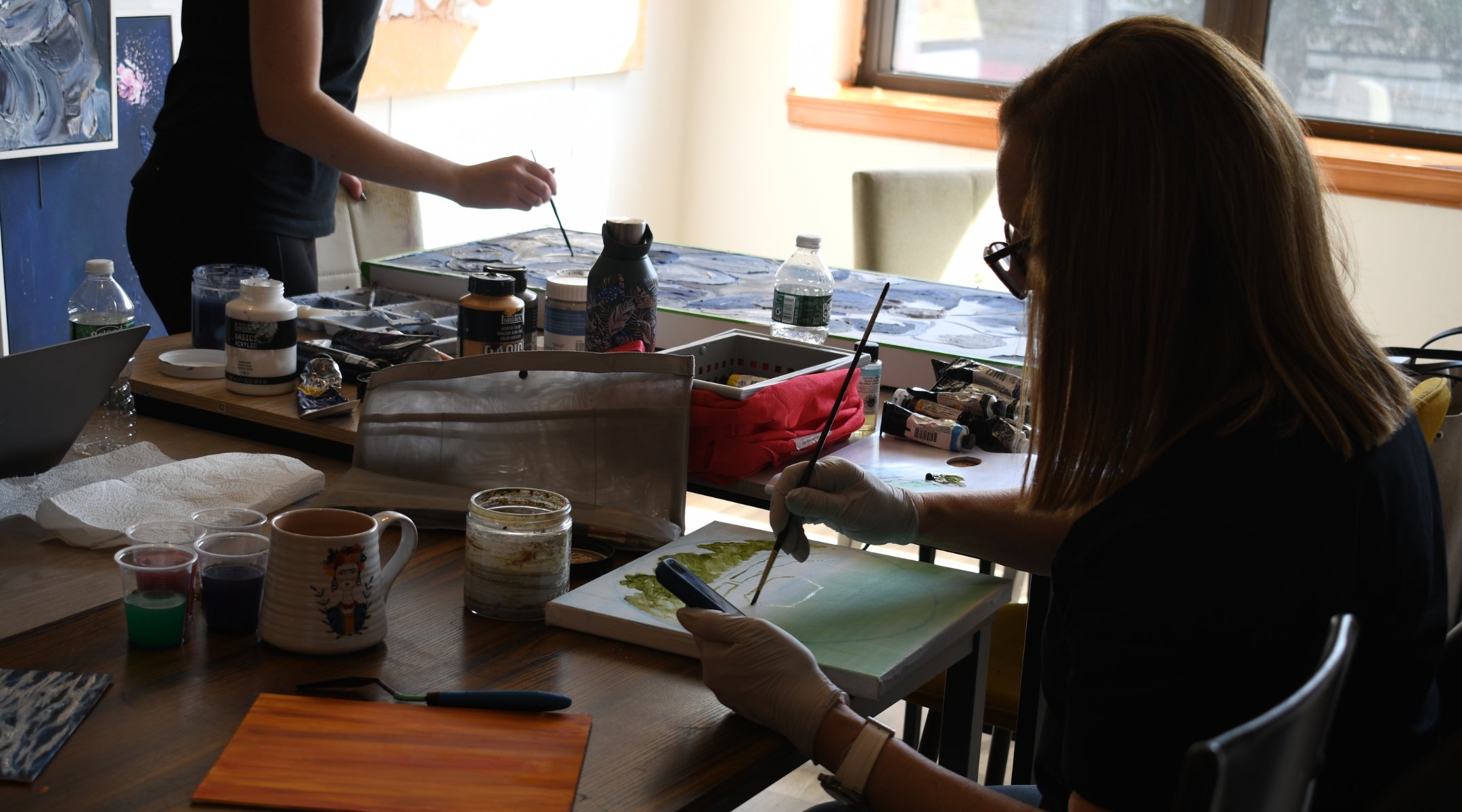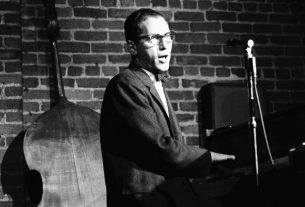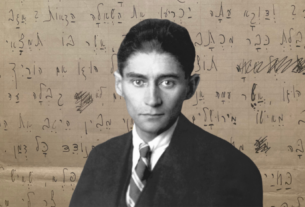On the second floor of a nondescript commercial building in Gravesend, Brooklyn, is a small artists’ studio. There, four long wooden tables are pushed together to create one massive table covered with oil paints, canvases, watercolors and other tools of the trade. The white walls are adorned with dozens of drawings and paintings; along one wall, a dozen cubbies are filled with even more art supplies.
It could be one of countless shared studio spaces for artists that are hidden in corners throughout the five boroughs. But this particular space is designed expressly for Jewish women artists: It’s closed on Shabbat and Jewish holidays, and among the art and design books on the shelves are siddurs, or prayer books.
Welcome to Muse Brooklyn, a coworking space built by and for Jewish women artists. The brainchild of Lenore Mizrachi-Cohen, a conceptual artist and observant Jew, the space doubles as an arts event space for its corner of Brooklyn, which is home to a significant Syrian Jewish community. Some 38,200 and 55,000 Syrian Jews live in the surrounding neighborhoods, according to a recent study commissioned by JIMENA, a nonprofit that advocates Middle Eastern and North African Jews — and, so far, all seven members of the shared studio are Mizrahi Jews.
“I initially started it for my own needs,” said Cohen, a 35-year-old married mother of four who has been working as an artist and calligrapher for 15 years.
Cohen was inspired to create Muse after a stint, in 2019, at a women-only art studio in Jerusalem, called Studio of Her Own. That shared space — which was designed for religious women often facing communal pressures against their artistic pursuits — opened her eyes to what a neighborhood studio for women like her could look like.
“It was 12 minutes away from my house, and it was a very supportive environment,” Cohen recalled. When she returned to New York she sought something similar in Brooklyn, but didn’t find it. “That’s when I realized that if it doesn’t exist in my own neighborhood, then it’s my job to make it.”
At Muse Brooklyn, the seven current members are all part of the local Syrian Jewish community, and all are at least somewhat traditionally observant. (There’s room for twice as many members, Cohen added, and being Jewish, Mizrahi or religious is not required.) In the shared space, the women — who each pay $206 a month — can draw, paint, or work in any medium they like, as well as brainstorm ideas with each other in a supportive environment of a shared identity. And because the space is women-only, members never need to worry about issues of yichud, the Jewish laws prohibiting men and women who are not married to each other from being secluded together.
The idea for Muse predated the war in Gaza, but Cohen said the tense climate for some Jewish artists within the city’s existing cultural institutions that resulted fueled her drive.
Lenore Mizrachi-Cohen, artist and founder of Muse artist studio in Brooklyn, drafts a calligraphy project. (Jackie Hajdenberg)
Previously a member at a shared studio in Red Hook, Brooklyn, Cohen said that she had felt singled out there as a Jew, recalling that she was once asked if she was comfortable with another artist donating money to a pro-Palestinian children’s charity.
“A, that’s weird that you think I would have a problem with that. B, it’s already somewhat of an issue that they’re creating: ‘Oh, you’re Jewish, but I’m a ‘free Palestine’ person,’” Cohen said.
Cohen began looking for a space to execute her vision in September 2023. Muse Brooklyn officially launched exactly a year later, when she found a space to rent within a larger complex currently used as a music coworking space by another member of the Syrian community.
Aimee Swed, a 32-year-old content and marketing professional and mother of two young boys, joined Muse when it opened last fall. Swed said that, as a Shabbat-observant Jew, she felt “very discouraged from entering the art world.” Many galleries held openings on Friday nights, she explained, and workshops and classes were often on Saturdays.
An artist who works in watercolor, acrylics and multimedia, she said her work has been “transformed” by the shared Jewish space.
“The camaraderie kind of reinitiated my own artistic practice,” said Swed, whose work focuses on the food found on her Syrian Jewish Shabbat table, like her watercolors of kibbeh meatballs with rice and meat. “It’s really something that became very important to me, because it felt so good to create with others, and finally find a space that was very friendly towards what you were creating.”
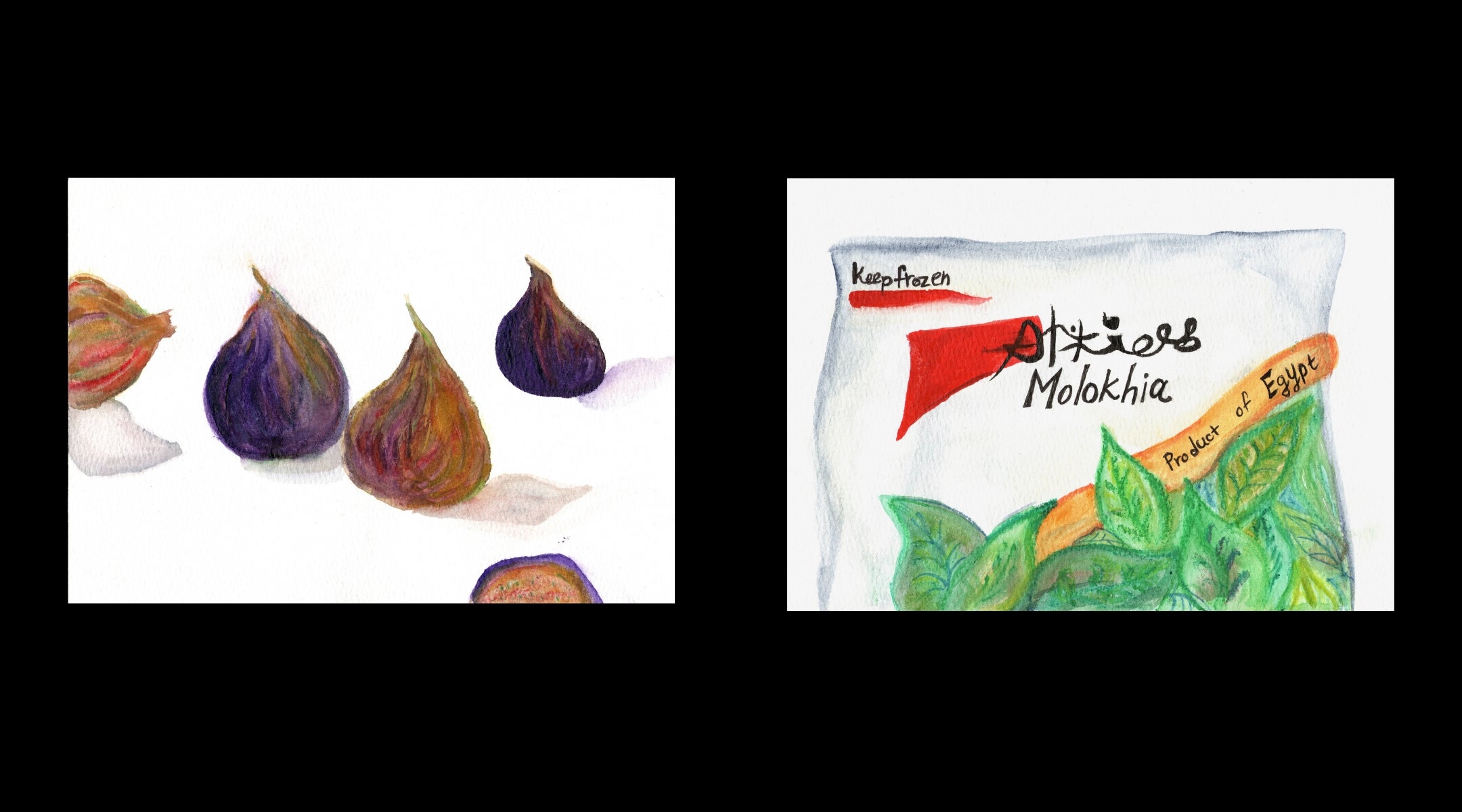
Much of artist Aimee Swed’s work focuses on the foods of her Syrian-Egyptian Jewish heritage. (Courtesy Aimee Swed)
Now that she works in a studio with other Mizrahi Jewish artists, Swed, whose family is Syrian via Egypt, finds inspiration all around her, including Cohen’s Arabic calligraphy. “One of the first things that I made was [a painting of] some phrases, like, ‘yom asal, yom basal,’ — ‘one day onion, one day honey’ [which] is what my grandma would say,” she said.
Not everyone who comes to Muse is necessarily working on Jewish art. For Shelley Shamah, a 22-year-old illustrator, graphic designer and photographer, Muse is simply a safe space for artists who happen to be Jewish.
Shamah, who also joined last fall, was drawn to Muse because she needed “to be in a space that fuels creativity,” she said.
Part of that, she explained, is simply being around likeminded people. “Jews are a microcosm of the world, but Syrians are a microcosm of Jews,” she said.
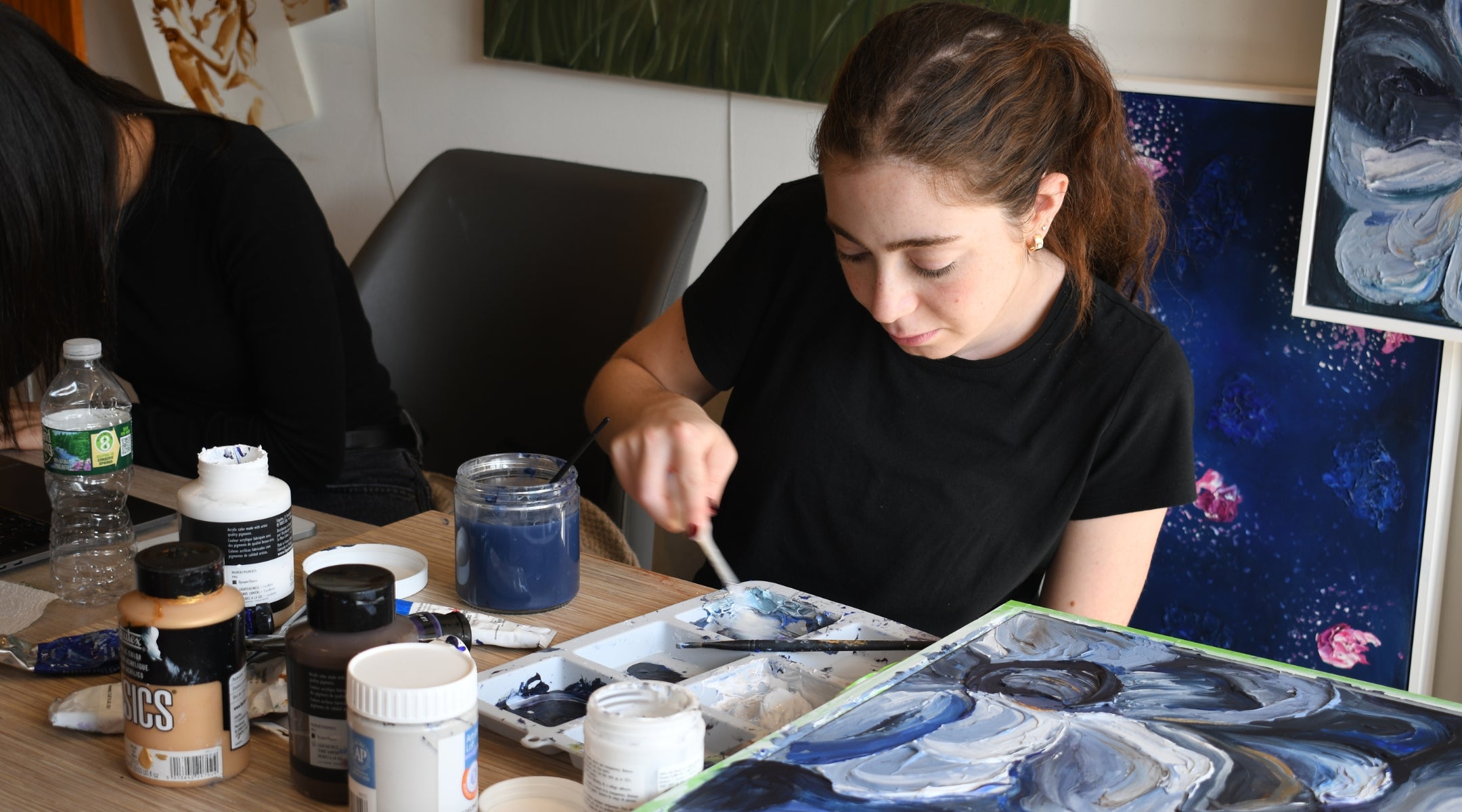
Shelley Shamah paints a canvas for her dining room. (Jackie Hajdenberg)
On a recent Tuesday, Shamah, a recent graduate of the Pratt Institute, was working on a canvas for her dining room, which she will soon be sharing with her fiancé, a musician.
Shamah and another young Muse member, Allie Saada, a recent graduate of the Fashion Institute of Technology, consider themselves part of the “younger bunch” of artists in the group.
Not yet married or mothers, they feel they can take full advantage of the space, coming in at all hours of the day and night, where they often run into each other.
For Swed, whose sons are 4 and 5, the space provides almost the opposite advantage.
“It was really hard, like any working mom, trying to step back into another world once she’s had children,” Swed said. “So as a mom coming into an all-women space, that felt really good, too.”
The studio also functions as a space for the neighborhood to engage in the arts. Several times a month, Muse holds events such as art classes, paint-and-sip nights and museum tours, taught and led by its members, and always with the Jewish holiday schedule in mind. Shelley Shamah even had her 22nd birthday party, a drink-and-draw night, in the space with a dozen of her friends.
Ultimately, Cohen hopes that Muse will grow into a robust network of Jewish women artists. “The more people you have in the space who generate opportunities like this, the better it is for everyone concerned,” Cohen, who’s shown work at the Jewish Museum in Vienna, the Museo Ebraico in Lecce, Ital,y and the Jewish Museum in Amsterdam, said. “All your best opportunities in your career as an artist, at least for me, come from other artists.”
She added: “Create the conditions to be successful. Show up and watch what happens.”
Jewish stories matter, and so does your support.

